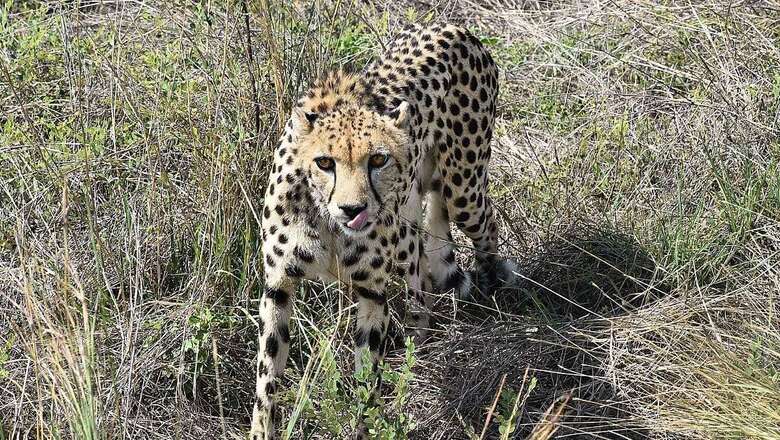
views
The central government’s ambitious wildlife experiment to revive the cheetah population in India is under fire from all sides. A quarter of the founder-population is already lost as three of the big cats succumbed to septicaemia over the past month, forcing forest department officials to dart and recapture the remaining felines.
A total of 14 cheetahs, including a lone cub, are now confined in enclosures yet again with their radio collars removed to monitor their health. Five of the big cats, who were found to be infected with similar conditions, were treated with a drug that is likely to protect them from such infections for the remainder of the monsoon.
According to the forest department, all the cheetahs are now “healthy” even as experts are now divided over when to release the animals into the wild again. While scientists are waiting for the humid weather conditions to subside, international experts have cautioned against holding them captive for a long duration that can further put their health in peril.
News18 exclusively spoke to South African cheetah expert Vincent van dan Merwe, who is on the consulting panel of the Cheetah Project Steering Committee. A conservation biologist and manager of South Africa’s Cheetah Metapopulation Project, he has been monitoring the growth of cheetahs in African reserves since 2011. Excerpts from an interview:
The 14 cheetahs (including one cub) at Kuno have been confined to enclosures again following infection concerns. Could this extended captivity be a problem for the felines?
The question is very valid. Because of the extreme pressure on people implementing this project on the ground, there is always an overreaction when something goes wrong. For instance, all the cheetahs were darted and brought back to enclosures for monitoring, even those that did not have a winter coat problem (skin infection). This is unsettling for the cheetahs. This is a high-profile project and the response is natural. But it’s certainly not helpful to put them into bomas, if they are found to be healthy.
The constant mobilisation, moving and capturing is extremely stressful. So the cheetahs find it difficult to settle into the new habitat. It prevents them from breeding and, so, extended captivity should be avoided. If the cheetah is found to be compromised because of the skin infection, then relocation to the bomas is justified. But if the animal is darted in the wild and found to be healthy, then there is no reason to put it into bomas.
One of the female cheetahs died during a mating attempt, and three others due to septicaemia. Do you think any of these deaths could have been avoided?
It is rare that a male kills a female during mating. It almost never happens. But, we were extremely unlucky. Yes, that was an incorrect decision on behalf of all the role players involved. We were also involved in that decision.
What about the deaths due to septicaemia? Another Namibian cat Tbilisi died on August 2 due to a similar cause when it was still in the wild.
That is something that we did not foresee. The winter coat issue eventually caused septicaemia (cheetahs tend to develop a thicker coat in anticipation of the winter in Africa in May/April, which became problematic at Kuno due to extreme humidity). The cheetahs that died due to septicaemia – all three were extremely wild cheetahs. You could only view them from 60 metres. It’s impossible to notice that the animal is compromised, especially in the thick lush bush in the wild. You cannot blame anyone for this.
Are there any concerns about not being involved in the decision making process in India?
It is a tough situation. The Namibians have a stronger background in cheetah husbandry inside enclosures, while ours is in management of wild cheetahs. We then give conflicting advice. Sometimes, it can be incorrect – as was the case of that female getting killed by two males. So the Indian officials have naturally huddled together. They have become distrusting of outsiders and they make their own decisions. And, by now, they know about their cheetahs more than anyone else because they have been working with them for almost a year.




















Comments
0 comment